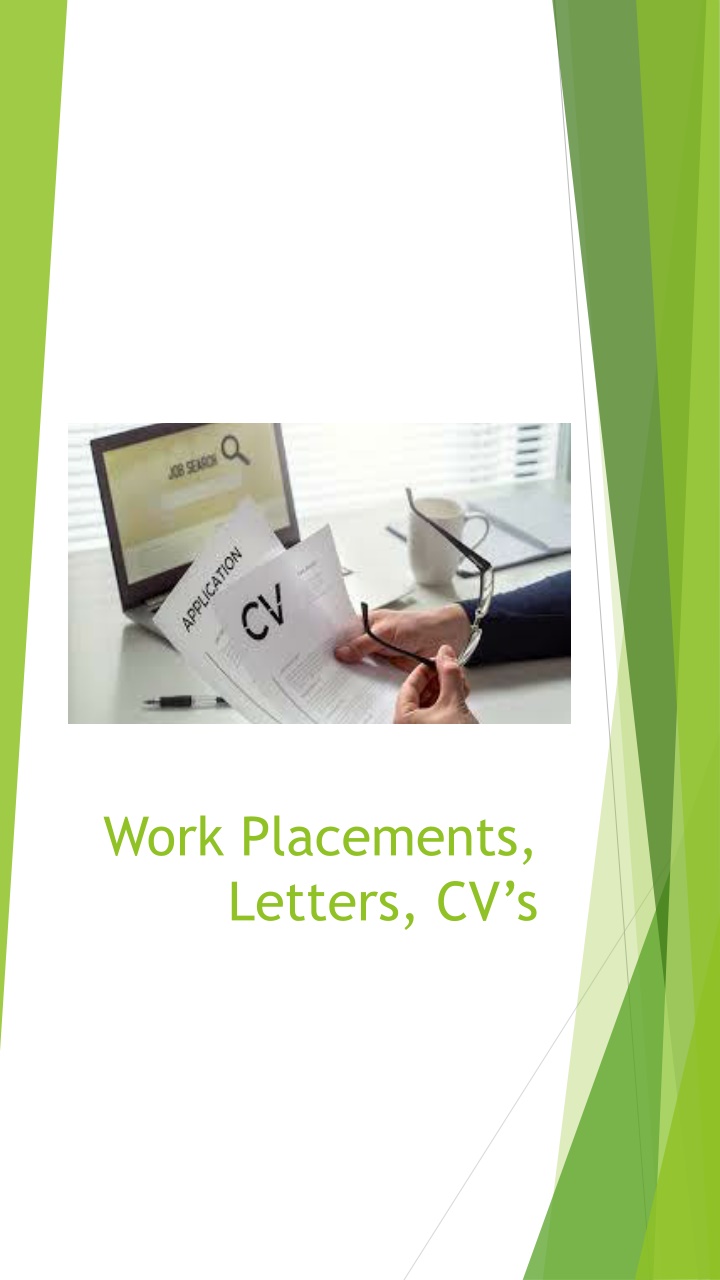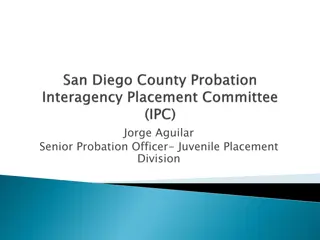Guide to Contacting Employers for Work Placements and Job Opportunities
Learn how to effectively contact employers for work placements and job opportunities by crafting speculative letters, covering letters, CVs, and application forms. Understand the purpose of each resource and gain insights into engaging with potential employers directly to enhance your chances of securing work experience. Take control of your career path with this comprehensive guide.
Download Presentation

Please find below an Image/Link to download the presentation.
The content on the website is provided AS IS for your information and personal use only. It may not be sold, licensed, or shared on other websites without obtaining consent from the author.If you encounter any issues during the download, it is possible that the publisher has removed the file from their server.
You are allowed to download the files provided on this website for personal or commercial use, subject to the condition that they are used lawfully. All files are the property of their respective owners.
The content on the website is provided AS IS for your information and personal use only. It may not be sold, licensed, or shared on other websites without obtaining consent from the author.
E N D
Presentation Transcript
Work Placements, Letters, CV s
Employers and Work Placements The Work Placement Team at Wakefield College supports students with finding work placement opportunities but it may be that you wish to find one yourself or apply for an opportunity that you have seen advertised. Although every employer is different, the majority prefer to be contacted formally by young people, when asking about work experience at their company. Employers submitted to them so that they can make an informed choice about who they would like to interview/ offer a work placement to. often ask for CV s or application forms to be This handout has been designed to help you understand how you can contact employers directly to ask about work experience and includes examples of the following: A Speculative Letter A Covering Letter A CV An Application Form It is important that you understand the purpose of each of these resources as they are all generally required when you are looking for employment/ work experience. Read on to find out more .
A Speculative Letter A speculative letter is sent to a company when they are not advertising any job roles. You may have a particular company in mind that you would like to complete work experience at. This would be when you send a speculative letter to them, asking if they could offer some work experience to you. This letter can be adapted to an email by taking out the address details from the letter. Below is a guideline of a speculative letter: The 1st line of your address, The 2nd line of your address, Town/ City, Post Code Company Name, The 1st line of the company address, The 2nd line of the company address, Town/ City, Post Code Date To Whom it May Concern, First paragraph (Purpose of your letter) Introduce yourself and explain the reason why you are writing i.e. to ask if there are any work experience opportunities in the marketing department at that company. Second paragraph (Explain why you need the placement) In this paragraph, you should mention the course that you are studying at Wakefield College and the reason why you would like to get some work experience e.g. to improve your knowledge of digital marketing and how the placement supports your course. Third paragraph (Action required how they can help you to use your skills and develop new ones) Explain why you would like a Work Placement at this particular company (have a look at their website to see their news. They may have recently won an award or raised some money for a local charity). Highlight the skills and personal qualities that you can offer the company and refer to your CV i.e. When I worked at Smiths Shop as a Weekend Store Assistant, I developed my customer service skills and ability to work with others as part of a team. I feel that these skills will help me to fit easily into your team. Fourth paragraph (Conclusion) Thank the employer for taking the time to read your letter and give details of when you would be available for a placement interview if that is required. Add that you have included your CV with this letter to give the employer further information about you. If you require any further information, you can contact my Work Placement Officer (their name) on (their telephone number) or by (their email address). Yours sincerely, Joe Bloggs Joe Bloggs Remember to check your spelling and grammar before you send your letter.
A Covering Letter A covering letter is used to introduce yourself to a person/ company to express your interest in a particular job/ work placement role that they have advertised. You should send a copy of your CV with your covering letter, to give the employer more information about you. Below is an example adapted from the REED website: (Again, this letter can be adapted to an email by taking the address details out of the letter) Your name Your address Your postcode Employers name Company address Postcode Date Dear Sir/ Madam (or name), I am a student at Wakefield College currently studying (title of subject). I am writing in application for the work placement role which is advertised on (your company website/ Indeed/ Facebook page). I have included a copy of my CV for your consideration. I am keen to gain some practical work experience in (chosen field of work i.e.Textile Design), because (reason for pursuing a placement with this particular company and field). I would be available to carry out the work experience on the dates that you have provided (you should always check dates with your Tutor before agreeing to a work placement). I am a (list relevant skills and personal attributes), which can be shown in (real life examples that demonstrate your skills i.e. a particular college assignment). In my spare time, I like to (relevant hobbies and interests), and I ve also (had some experience in/I am a member of (list any groups/clubs other past work experience). As an enthusiastic student with a keen interest in what your organisation does, alongside an ability to learn new things and aspirations to progress in this industry, I would be very grateful to be considered for an opportunity at (company name). I look forward to hearing from you soon. Yours sincerely, Joe Boggs Joe Bloggs Remember to check your spelling and grammar before you send your letter.
Your CV CV stands for Curriculum Vitae which loosely means the course of my life . Employers ask for CV s when recruiting so that they can gather vital information about their applicants and decide who is the most suitable candidate to interview for the work placement/job role. CV s should be clear and no longer than 2 A4 pages. Your CV should include the following information: Your up to date contact details including your name, address, telephone number and email address. A Personal Profile/ Statement section that explains who you are and what your job aspirations are (this should be amended to each role that you apply for). A Key Skills section which gives a brief list of your most relevant skills. Information about educational history and previous qualifications. You should always start with the most recent first and work your way backwards. Information about previous work experience and employment. You should include details such as your job role, the name of the company that you worked for, the dates that you worked there. Again, start with the most recent first. Hobbies and Interests section- this is optional, It includes information about what you enjoy doing in your spare time/ your accomplishments/ details of any groups that you are in. This section gives the employer a snapshot of who you are. References available on request. You should always ask 2 people, not related to you and who have you known you for a while, if they are willing to be a reference for you before you pass their contact details on to an employer. Please see the next page for a CV template which will help you to create a basic CV. You can also use Career Coach to do this. You can find other templates online with different designs. It would be useful to look at these as it is important that your CV is individual and stands out from other peoples CV s.
Name Address Telephone/Mobile number Email address Personal Profile A statement which describes who you are as a person and the career aspirations that you have. Key Skills A clear bullet point list that identifies the key skills that you have that are relevant to the placement/job role that you are applying for. Education and Qualifications Dates attended: Wakefield College, Margaret Street, Wakefield WF1 2DH Qualifications gained/Currently studying Dates attended: (High School name), (High School address) GCSEs achieved: (list of subjects and grades). Work Experience Job Role, Company name, Company address Responsibilities: (Work backwards through the experience that you have had). Hobbies and Interests A short description of what you enjoy doing in your spare time/ details of any clubs that you are a member of/ accomplishments that you are proud of. This could include when you raised money for a charity, if you have completed your Duke of Edinburgh Award etc. References Available on request. (If you have the contact details of 2 references and they are willing for you to share their details, these can be included on your CV).























